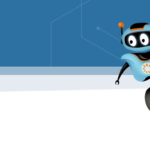1. Introduction to CivitAI and JuggernautXL
CivitAI and JuggernautXL are innovative AI tools that have gained traction for their robust capabilities in generating AI-driven content, including highly realistic images and text. While these tools have legitimate uses in creative industries, they also pose significant risks when leveraged for malicious purposes, particularly in phishing attacks and a rising cybercrime technique known as Pig Butchering.
CivitAI is primarily known for its ability to generate hyper-realistic images and deepfakes. The tool uses advanced machine learning models to create images that are nearly indistinguishable from real photographs. These images can include faces, documents, and other elements that are often used in social engineering attacks.
JuggernautXL, on the other hand, is a sophisticated language model similar to GPT-4 but is particularly known for its advanced capabilities in natural language generation and understanding. It can produce human-like text, making it a powerful tool for crafting persuasive phishing emails or other forms of communication that can deceive individuals into disclosing sensitive information.
2. Phishing Attacks Using CivitAI and JuggernautXL
Phishing remains one of the most effective and prevalent methods of cyber attack. The combination of CivitAI and JuggernautXL can enhance the effectiveness of phishing campaigns in the following ways:
- Realistic Visual Content: Attackers can use CivitAI to create fake IDs, documents, or images of individuals that look authentic. These can be included in phishing emails to make the communication appear more legitimate. For instance, a phishing email could contain a fake yet convincing image of a corporate executive, supposedly requesting sensitive information or urgent action.
- Tailored and Convincing Text: JuggernautXL can generate highly personalized phishing emails. By analyzing publicly available information, such as social media profiles, the language model can craft messages that resonate with the target’s interests or concerns. This increases the likelihood of the target falling for the scam.
- Deepfakes and Video Phishing: CivitAI’s ability to create realistic deepfake videos opens up a new dimension in phishing attacks, known as video phishing. Imagine receiving a video message that appears to be from your boss, instructing you to transfer funds to a specified account. The realistic nature of such content can easily deceive even the most vigilant individuals.
3. The Pig Butchering Attack and Its Connection to AI Tools
Pig Butchering is a relatively new type of scam where the attacker invests time in “fattening up” the victim before executing the scam. This usually involves building a relationship with the victim over time, often via social media or messaging platforms, and then gradually introducing them to fraudulent investment schemes.
- Social Engineering at Scale: JuggernautXL can be used to automate the process of engaging with multiple victims simultaneously, maintaining a personalized and consistent dialogue that lures them into a false sense of security. The AI can mimic various conversational styles, making it easier to build trust with diverse victims.
- Convincing Visuals for Fake Investment Platforms: CivitAI can generate sophisticated graphics and interfaces for fake investment platforms. These visuals can make fraudulent websites appear professional and legitimate, further convincing victims that they are dealing with a genuine financial service.
- Combining Visuals and Text for Deeper Deception: The combination of CivitAI and JuggernautXL allows attackers to create a fully immersive scam experience. For example, an attacker could send a deepfake video of a “financial advisor” explaining the benefits of a fake investment scheme, followed by a series of tailored messages that reinforce the scam’s credibility.
4. Conclusion: The Growing Threat of AI in Cybercrime
The convergence of tools like CivitAI and JuggernautXL represents a significant evolution in cybercrime tactics. These AI-driven tools enable attackers to execute more convincing and personalized phishing attacks and Pig Butchering scams at scale, making them more dangerous than ever before.
As AI technology continues to advance, it is crucial for cybersecurity professionals to be aware of these tools’ potential for misuse and develop strategies to mitigate the risks they pose. This includes investing in advanced detection mechanisms that can identify AI-generated content and training individuals to recognize the signs of AI-driven scams.












